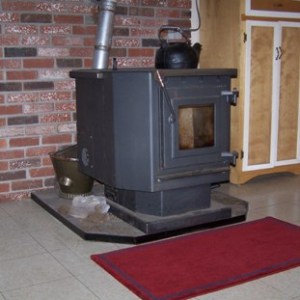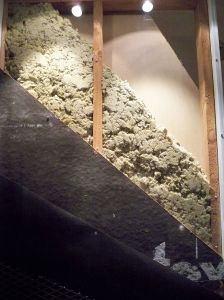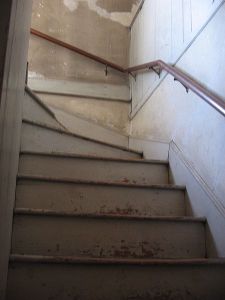Fireplace Alternatives
“Traditional fireplaces draw in as much as 300 cubic feet per minute of heated room air for combustion, then send it straight up the chimney.” Even though modern designs of traditional fireplaces attempt to reverse the negative side-effects, “fireplaces are still energy losers.” (Energy.gov Wood & Pellet Burning)
I was really shocked to read that. I suppose I was under hypnosis of the flame, believing the illusion that because I, sitting next to the fire, was warm, the rest of the living spaces were warm too. Of course, I never noticed this energy drain because once I built a fire, I would stick around to enjoy it. However, recently I began to pay more attention to my home’s energy consumption, and I am becoming more aware of even slight environmental changes. I am realizing which rooms stay chilly no matter what, which windows leak, and whether or not using my fireplace is beneficial to my home’s climate.
In an Earlier Blog Post, we established that the fireplace is one of The Big 3 locations within your home where energy is lost. But we have this instinctual connection to fire, not to mention it can be quite cozy. Not everyone is ready to give up that fateful relationship. If you consider yourself one of those people, there are alternatives to traditional fireplaces. It is important, nonetheless, to keep in mind that wood burning is hazardous to your health and all the living things surrounding you; it is damaging to the environment and the atmosphere releasing hundreds of chemical compounds upon combustion. In addition, your family is breathing in a lot of soot and ash, as well as dust pulled into living spaces from drafts around your house. Increasing the efficiency of your wood-burning appliances will ensure a minimal effect on your family’s health and the health of your surrounding environment.
According to Energy.gov, wood and pellet burning appliances can be more efficient than hearth and chimney systems built into the home. Some of the options include catalytic and advanced combustion stoves, as well as pellet-burning appliances. When replacing older wood burning appliances remember to check for an EPA certification emblem on the new one.
Catalytic wood stoves and advanced combustion wood stoves produce more heat and clean their own exhaust. Heated oxygen is vented above the fire to lower the temperature of combustible gases, allowing them to burn longer. This more thorough method of heat production burns hotter, with less fuel, and safer, reducing the amount of creosote, the solid build-up of soot, ash, smoke, and other gases, inside the chimney.
Pellet- burning appliances use compacted organic fuel from repurposed scraps or other recycled products. This fuel is a more quickly renewable option than wood logs from trees. These stoves can be expensive to purchase, but low installation costs keep the price between wood and pellet burning stoves comparable. When it comes to smoke emissions, pellet stoves burn cleaner than any other option. Even still wood and pellet burning appliances only heat the space in which they sit, so they should be installed where a majority of your time is spent.
If this news comes too late, or you really enjoy the ambience, turn off the heat in your house before starting a fire to conserve energy. Catalytic or pellet-burning fireplace inserts are another way to increase heat production and energy efficiency of your existing fireplace. Also, modern fireplaces fitted with a heat exchanger can distribute heat to rooms around your house, or to a basement auxiliary fan. This can make your fireplace nearly as efficient as a wood-stove, while achieving an EPA certified status of low emissions.
Professional installation of not only fireplace inserts, but wood and pellet burning appliances, will ensure maximum possible control over heat and fire by making the system as air-tight as possible. If you no longer wish to use your existing fireplace, have an inflatable stopper or plug installed and seal the flue.
In an upcoming blog, I will discuss the effectiveness of utilizing the central air conditioning system without any “help” from fire.
By Nick Ring.
Related articles:
Basement, Attic, and Crawlspaces: There Is A Pattern Here
Think of your house like your body for a moment. Do you walk outside naked in the winter time? Of course not! Or at least most of us don’t do that. Think of your basement, attic, and crawlspaces like the extremities of your body. You wear a hat and gloves, and maybe two pairs of socks when its cold enough. It is amazing how much of a difference wearing a hat or scarf makes in your personal comfort in the winter. Think about the effect of putting a hat, gloves and socks on your house. It would look cute! But seriously, think about how much energy (which always translates into money) you would save! Your home would be more comfortable and more energy efficient. Not only that, it would hold it’s warmth in winter and keep out the heat of summer. It wouldn’t get a’cold… Get it?
If you have been reading these energy efficiency blogs, you may have noticed a pattern. Basement, attic, crawlspaces… Like a broken record these troublesome locations of the house keep coming up. Be sure to Seal the Ducts, especially in the basement, attic, and crawlspaces. Then add insulation, especially in the basement, attic and crawlspaces… Don’t forget about sealing and insulating your pipes and ducts, especially… You guessed it!
The Home Energy Auditors from America’s Best Energy Team will probably tell you something similar. And, before even beginning to read this, you had probably already guessed that you could save yourself money, time and energy by being more concerned with these areas. You’re right. The tricky thing about these locations is their distance from the nucleus of the house. Basements and attics are often used as storage space rather than living space. Seasonal items such as clothes and decorations are shut away to collect dust for months at a time. These storage spaces are often cluttered and dimly lit, if at all. All of these factors make basements, attics, and crawlspaces easy to overlook. While it is easier to address the issues that you see every day, the fact that these places should be checked out first when assessing what needs maintenance, updating or replacing is ironic.
There is a pattern here involving our priorities and what we see, when in reality what we do not see is often causing the trouble. Like the crack between the wall and floor behind a stack of boxes in your basement that is so thin, only creepy crawlies and cold air seep in. Or the hole in the attic where a raccoon tried to nest last year. Take a little time and give your house a check-up.
Not everyone can afford to make the efficiency upgrades they want or need, but scheduling a Home Energy Audit with ABET will at least identify where the problems are and how they can be fixed. From there, America’s Best Energy Team can assist you in finding a step-by-step path to the level of safety, comfort and efficiency you desire. If you are the resourceful type, you may want to try the good old DIY method, and buy some caulk, weather strips, or spray foam and fill in those energy drains yourself. Use your senses to locate where a draft is entering your house, and be sure to check the basement, attic and crawlspaces.
If you don’t catch on to the pattern, you may end up wearing a hat, gloves, and two pairs of socks INSIDE!
By Nick Ring.
The BIG 3
People have various motivations for wanting to conserve energy. Some people want to do their part in keeping the planet healthy. Others want to have more comfortable living spaces. Some people are following the trend. And still others just want to bring down their energy bill as low as possible.
No matter your motivation, energy conservation is an awesome idea! It’s one of the few win-win-win scenarios that I’ve ever encountered!
America’s Best Energy Team does us all a favor by organizing a breakdown of where energy is lost in the home. If you look at the list on this page, you will notice that every aspect of your home is a potential “energy drain.” From the shingles on your roof to the pipes coming into your basement, there are gaps and weaknesses that seed from improper installations or from weathering and the simple passage of time. The good news is you can do something about it! But where to start?
I can help guide you by introducing you to The BIG 3. The BIG 3 locations where homes lose the most energy include:
1. Floors, Walls and Ceilings (Yes, I know that’s what a house is.) account for 31% of home energy loss.
2. HVAC Ducts account for 15% of home energy loss.
3. Fireplaces account for 14% of home energy loss.
These numbers are not steadfast, they are averages provided to ABET by the Department of Energy. The easiest way to get the real numbers for your residence is by scheduling a Home Energy Audit. Companies like America’s Best Energy Team conduct Home Energy Audits, a thorough investigation of a home’s energy efficiency. Through a series of tests including a Blower Door Test, Thermographic Scan, and a Combustion Analysis of appliances. These tests will identify where your home is losing energy, where drafts enter, and how safely and effectively air and gases are ventilated throughout the house. The only requirement for scheduling a Home Energy Audit is that the property be a mobile home, single home, multi-family dwelling, or townhouse. If you are a renter, written permission from your landlord must be provided before audits are conducted. If written permission is difficult to obtain or you do not live in one of the previously mentioned residences, a QHEC or Quick Home Energy Check can be conducted for free and is appropriate for any type of home.
By Nick Ring.
To read more about The BIG 3, check out these detailed blog posts.





